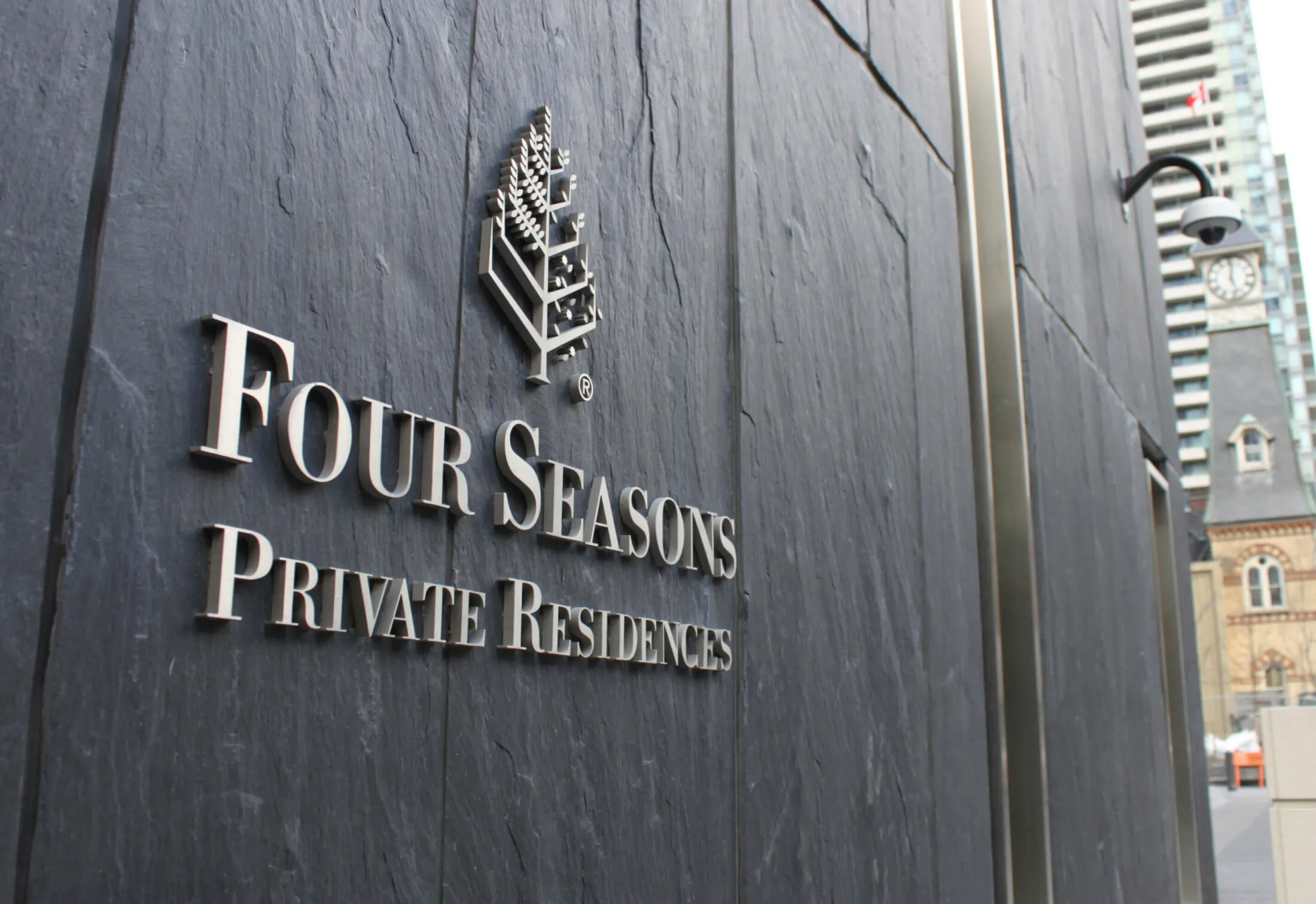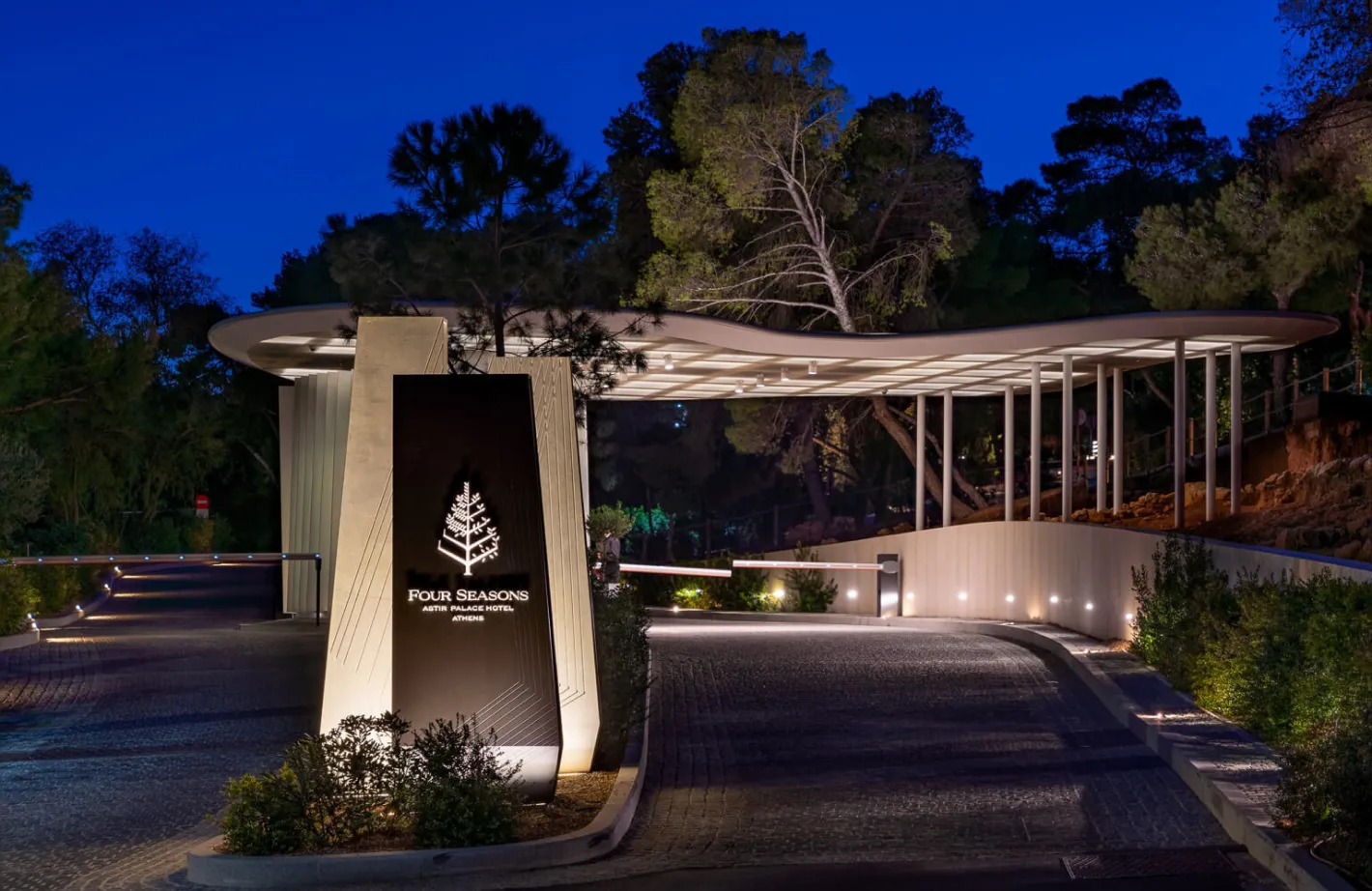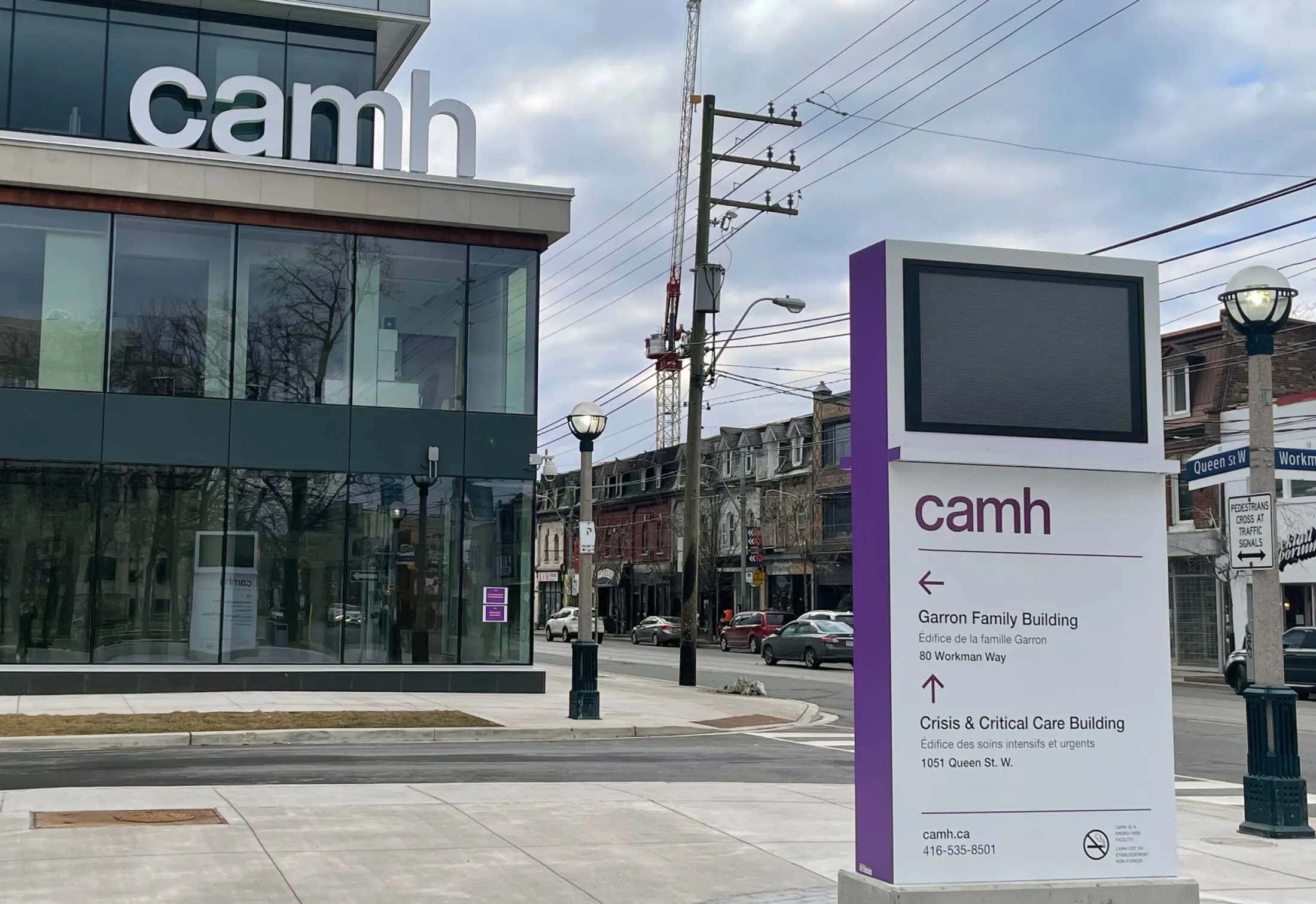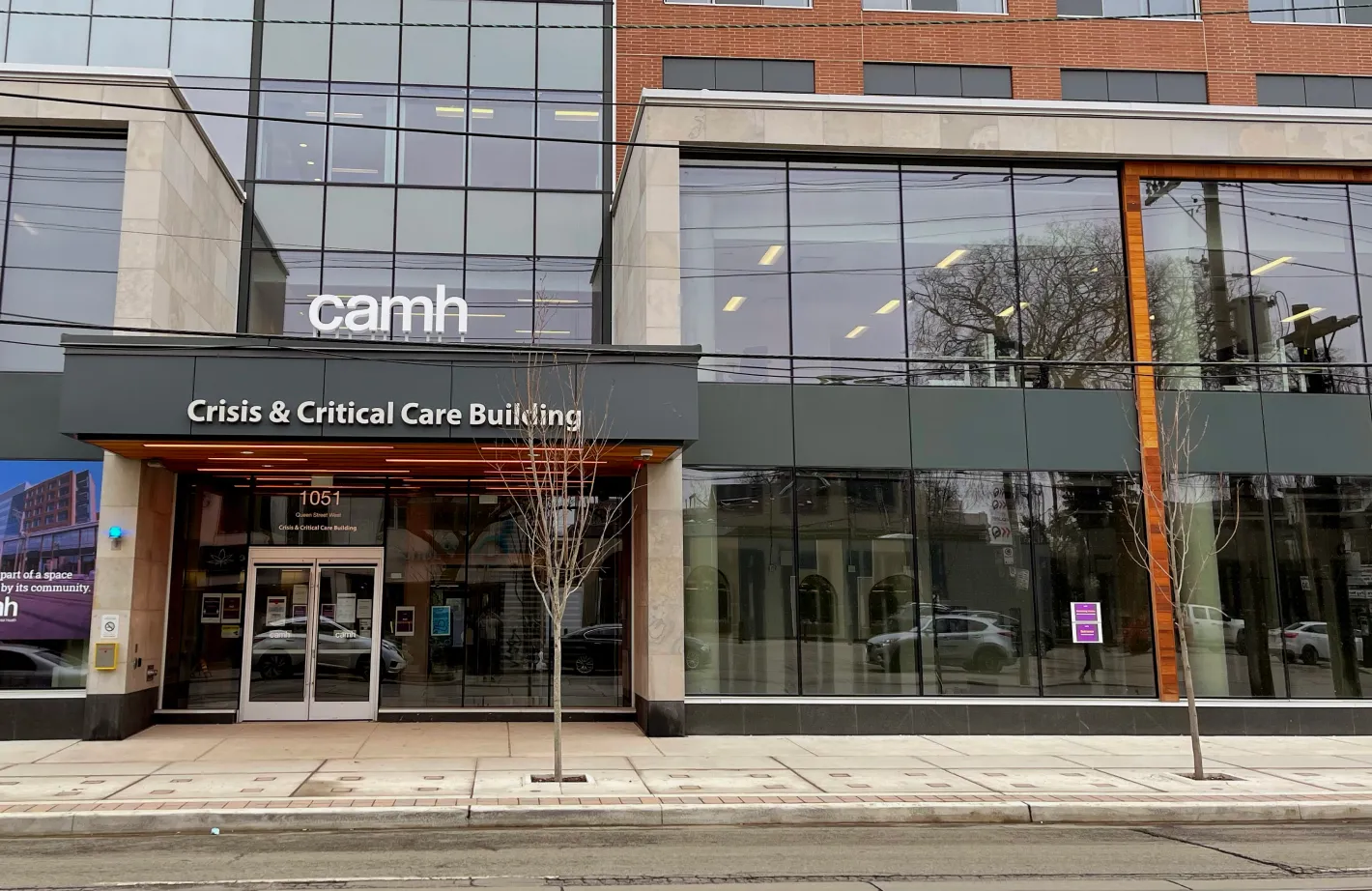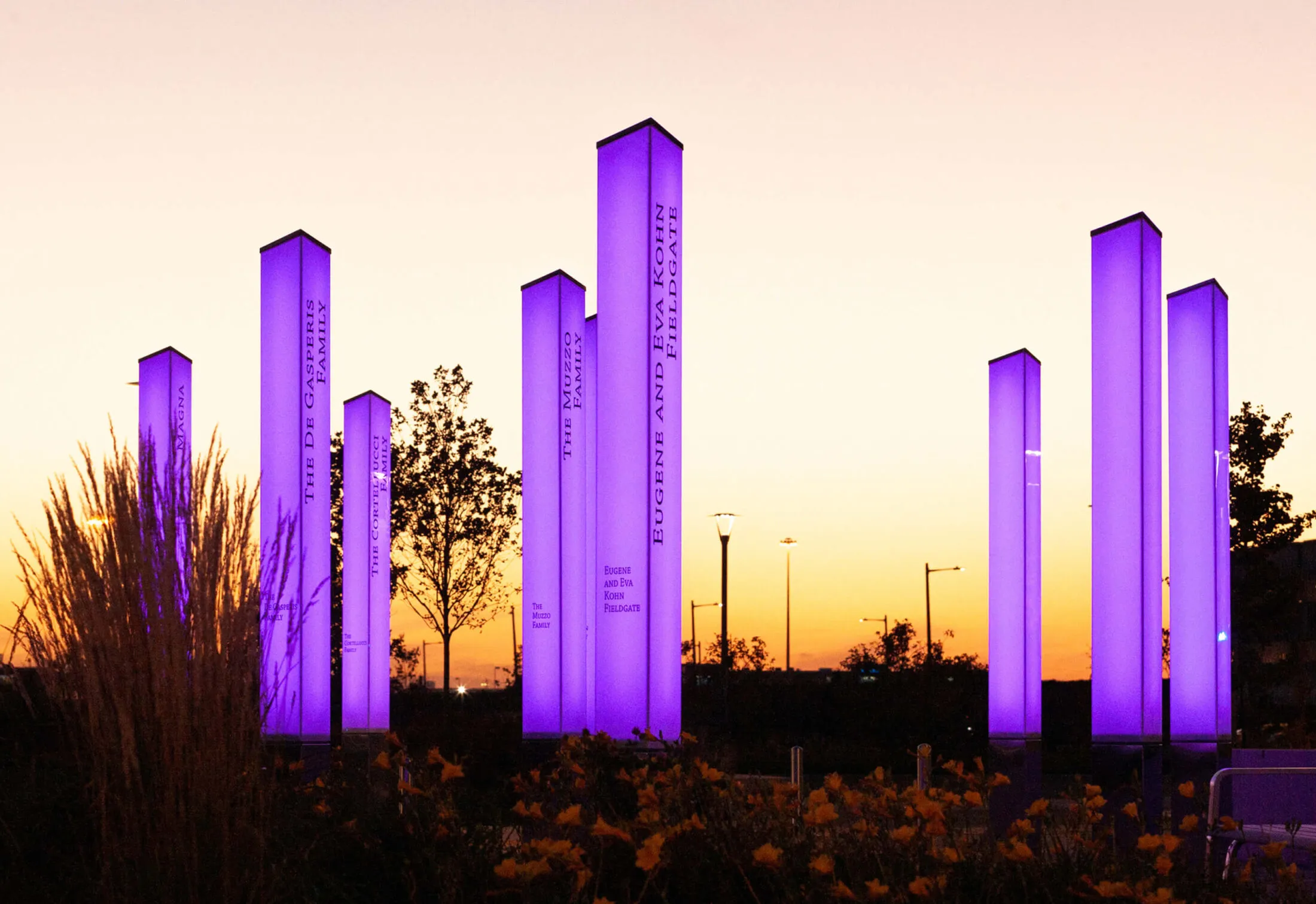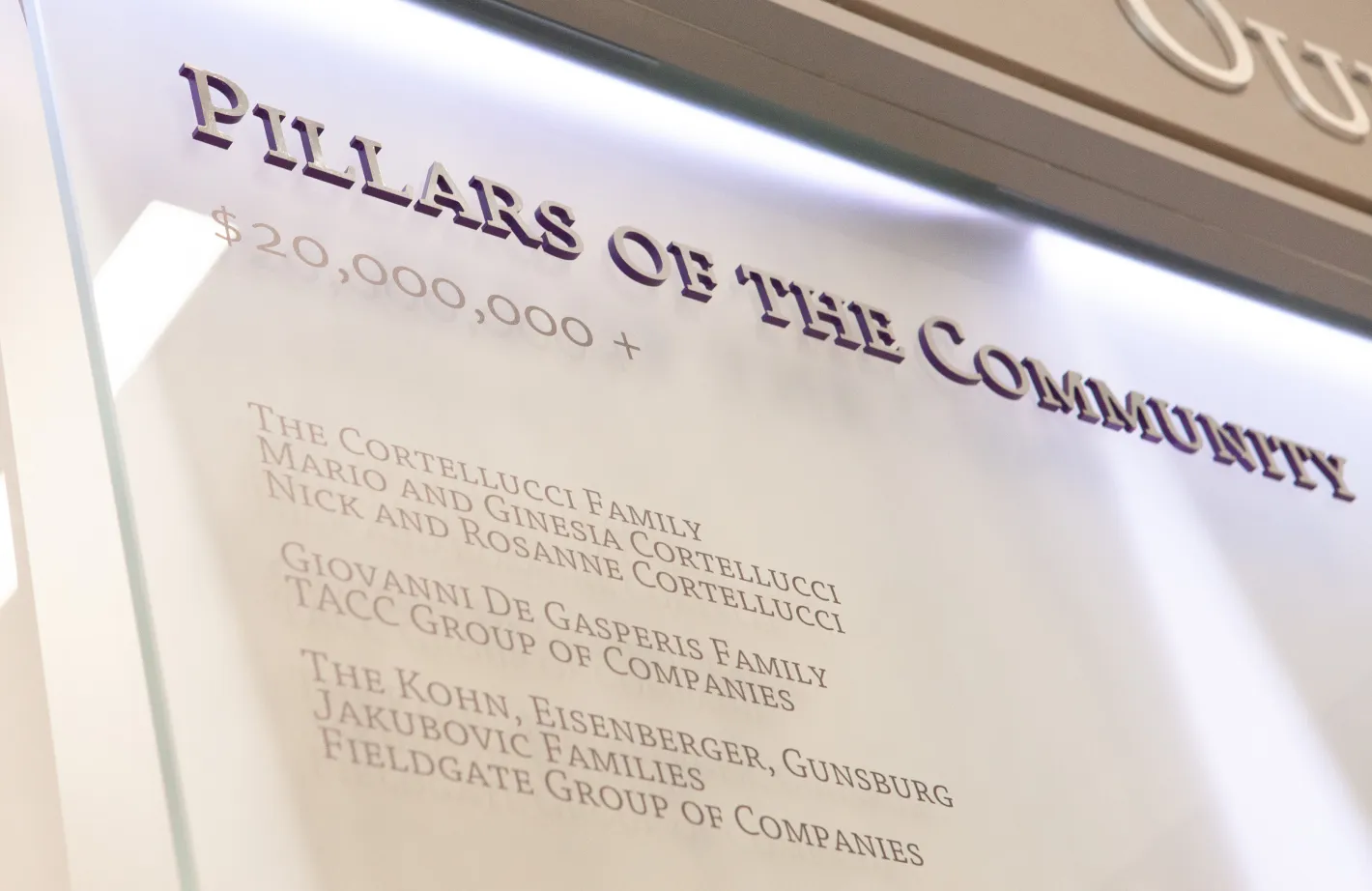Environmental Graphic Design
How a person perceives a physical space can significantly impact their movements within the space. To achieve a well-designed environment, we firmly believe in a comprehensive approach that entails careful wayfinding and placemaking. By deliberately fostering a “sense of place” in interconnected spaces, we can make it easier for people to navigate and enjoy their surroundings.
Signage expresses the language, symbols and graphics representing a brand’s identity, character and values concerning the surrounding space and environment. The visual properties of signage should seamlessly integrate with the architecture and space without overpowering it. The visual allure of these symbols should create a feeling of quality, originality and care. The signs must maintain a uniform and coherent appearance, enabling people to navigate interior and exterior spaces effortlessly to access their chosen destinations.
To truly understand and create a meaningful connection with a space, you must experience its atmosphere, ambiance, physical objects and visual appeal. By taking a narrative-driven or storytelling approach to understanding and interpreting the emotional aspect of a place, we can identify and improve the human experience of a given environment.
We approach donor recognition by understanding the motivations behind philanthropic giving. We use storytelling, art and design, driven by a deep understanding of human behaviour, to create influential landmarks of appreciation that encourage meaningful connections with visitors and staff. Our recognition efforts showcase an appreciation for the beauty of your donors’ giving.
As humans, we naturally look for significance in our environment. The design of a space utilizes colour, imagery and materials to convey a sense of space. Our connection to the environment and the places where we reside and work helps us feel a part of the community and enhances our overall experience. Strategically incorporating graphic elements within a space can instill a sense of pride, convey brand values and even transcend language barriers.
Public art serves as a way to express shared beliefs, foster social connections and commemorate ideas. It communicates subconsciously, making it an impactful tool for creating a sense of place or encouraging introspection. By acknowledging the past, bringing us into the present, and inspiring contemplation about the future, art can move us in meaningful ways.
Our approach to the project discovery process creates a space for open discussion where all stakeholders can participate and share their perspectives. Through our workshop, we establish the basis for our research and analyze the insights we gather. Ultimately, this process will help us identify the key human factors foundational to enhancing the current signage and wayfinding experience.
To improve a site’s effectiveness, we analyze and review the signage, accessibility and environment-to-behaviour relationships. This analysis helps us identify gaps and provide recommendations for improvement, which are the foundation for our detailed research document, providing insights for the following steps to address specific challenges within the location.
Forge specializes in crafting captivating exhibit designs tailored to the unique narratives and spaces of museums and cultural institutions, seamlessly blending history, art, and innovation.
Forge excels in performing comprehensive signage audits, meticulously evaluating and optimizing wayfinding systems for seamless navigation and enhanced user experience.
